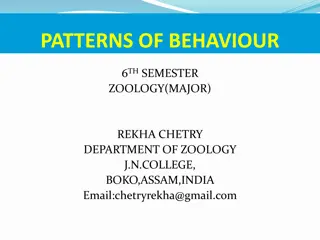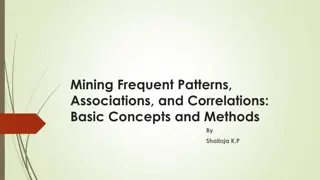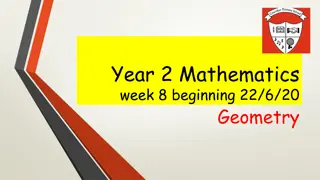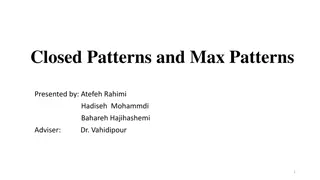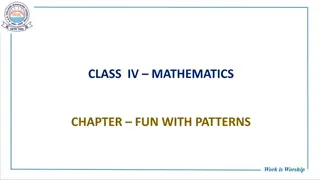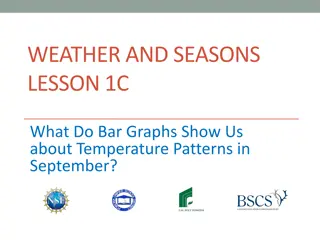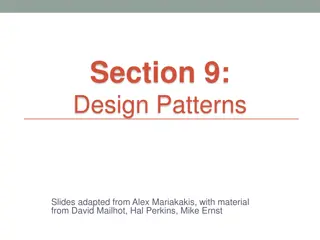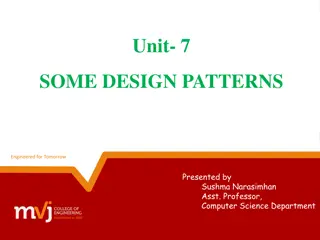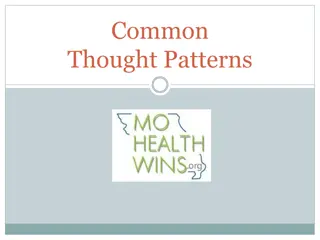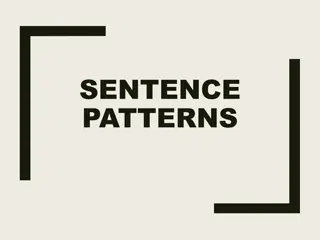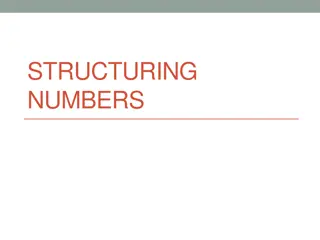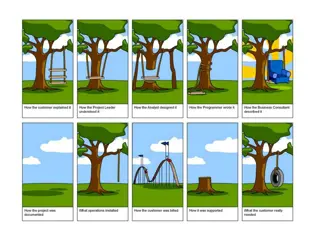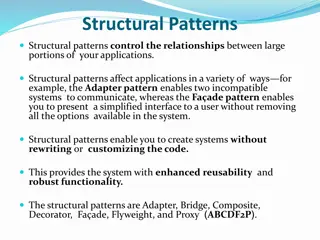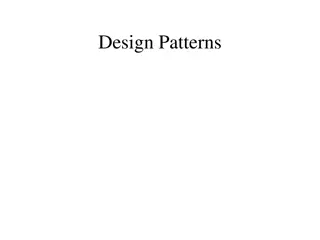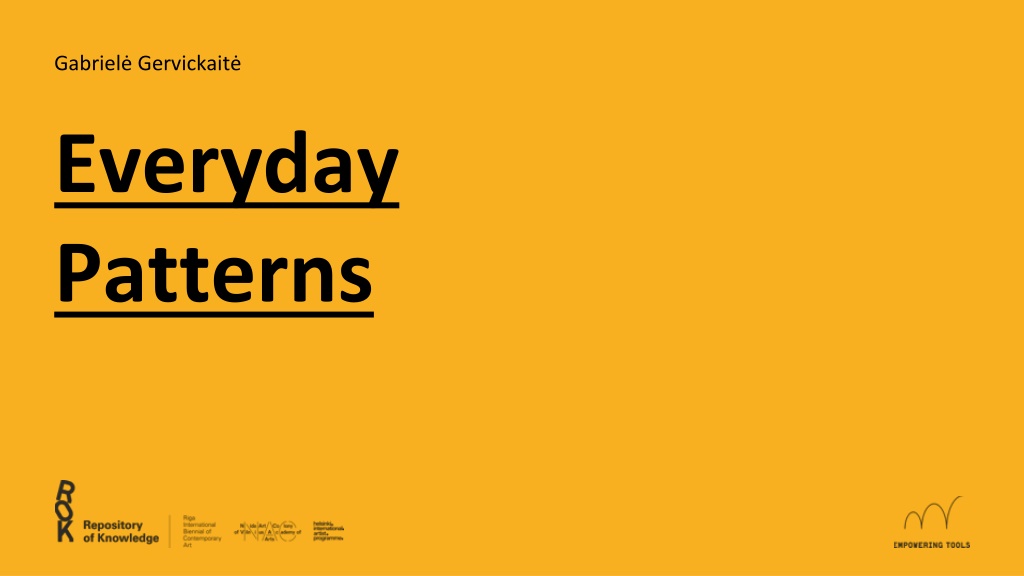
Discovering Everyday Patterns in Art and Nature
Explore the concept of patterns through art and nature, understanding how they shape our world and influence our perceptions. Engage in creative activities like dissecting fruits and vegetables to observe patterns, trigger senses, and create unique compositions. Immerse yourself in an imaginative journey inside a tomato, exploring colors, shapes, smells, and sounds. Witness the power of patterns in creating beauty, joy, and even annoyance in our daily lives.
Download Presentation

Please find below an Image/Link to download the presentation.
The content on the website is provided AS IS for your information and personal use only. It may not be sold, licensed, or shared on other websites without obtaining consent from the author. If you encounter any issues during the download, it is possible that the publisher has removed the file from their server.
You are allowed to download the files provided on this website for personal or commercial use, subject to the condition that they are used lawfully. All files are the property of their respective owners.
The content on the website is provided AS IS for your information and personal use only. It may not be sold, licensed, or shared on other websites without obtaining consent from the author.
E N D
Presentation Transcript
GabrielGervickait Everyday Patterns
What is a pattern? Where do we encounter them? How can we recognise them?
A pattern is anything that repeats. They are the dots, lines, waves and spaces that make up our world. We encounter them every day, often without noticing, and some patterns are so familiar l that we don t even recognise them, such as rows of buildings, the beating of our heart, the shape of a feather and even the timetable of our lessons at school! People and communities have the power to create patterns, too how we live and behave towards each other. These patterns can become models of how we recognise and create things, and how we connect to each other.
How are patterns made? Who makes patterns? How many patterns can we see around us? Gabriel Gervickait . Brains defragmenter. Paper collage. 2022.
Which patterns make you happy? Which patterns make you feel safe and calm? Which patterns annoy you? Gabriel Gervickait . Memory skin. Digital photography. 2020.
Which patterns would you like to change? Which patterns do you find beautiful? Which patterns do you find ugly? Improvised Broccoli Picture Lina, 2022
First, cut the fruit and vegetables in half, and then study their interiors carefully. Do you see any patterns? What do they remind you of? - Draw a composition of the fruits and vegetables that have been cut in half. - Touch them and draw what you feel. - Sniff them and draw what you smell. - Make stamps with the cut sides of the various fruits and vegetables. Dip into paint and then make patterns on paper.
Imagine that you are walking inside a tomato What do you see around you? What colours can you see? What can you smell? What can you hear? What colour are you? Are you big or small? Describe the surrounding environment. What shapes, materials, liquids, or holes are there around you? (For this activity you can use any fruit or vegetable, or natural object) Inside the Tomato Lina, 2022 Drawings made by people with learning difficulties from the day care centres Open Community and The Blessed J. Matulaitis Social Center .
Where do patterns appear in our daily life? What kinds of patterns are they aural, visual, textural, behavioural? How does my body recognise patterns? Can I see them, touch them or hear them
Follow the instructions to fold a mini-book and make your own pattern record!
What could you write about? What could you draw? - Try doodling a method of unplanned drawing, usually using dots, lines, and other shapes. - Write a comic about how a tomato met a carrot and became friends. - Write a story about a potato coming to Europe. - Write your name using the letters of fruits and vegetables. For example: TOMAS = T tomato, O orange, M mango, A apple, S soybean.
- Write a comic called My Everyday Patterns. - Draw some unusual geometric shapes. - Write an essay called The Patterns of My Everyday Life .
Thank you! Learning kit by Gabriel Gervickait Produced within the framework of Empowering Tools project and residency at Nida Art Colony (NAC) of Vilnius Academy of Art, 2022 The Erasmus+ project RIBOCA Repository of Knowledge is co-financed by the European Union. The European Commission is not responsible for the content of this publication.




